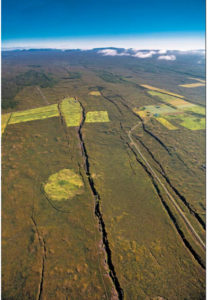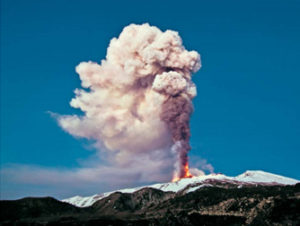 Source Travel 3Sixty Cracks on the ground caused by earthquakes
Following the devastating earthquakes that struck Lombok, an island to the east of Bali, Indonesia, in July and August, I was asked an important question: What would happen if an earthquake were to hit the runway as an airplane is approaching for landing? Circumstances Dictate The answer to this question is: it depends on the plane’s position at the time of the quake. Where the aircraft is about 1,000 feet above the runway, earthquakes are unlikely to affect an approaching plane unless accompanied with volcanic eruptions – fortunately, during the recent Lombok earthquakes, the Mt Rinjani volcano did not spew volcanic ash that could potentially cause problems to air traffic. Should air traffic be affected however, the pilot of a plane approaching the runway, after being alerted by the air traffic controller to abort the landing, may be reissued with a clearance to divert to another unaffected airfield. If a situation arises where the plane is about to land and there is no response from the control tower (because it has collapsed or the controllers are injured), the pilot would assume a loss of communication and abort the landing unless able to see green lights flashing from the tower. When looking at the impact earthquakes can have on an airport runway, it should be remembered that unlike the surface of a road, which can be easily affected by tremors, the runway surface – normally constructed from asphalt or concrete and varying in density between 12 inches and four feet deep – is incredibly strong. In the event of a quake, the soil on either side of the runway would give way first.
Where an aircraft has already touched down and the runway surface is still intact, the pilot has the option to take-off and go around, even after the plane’s wheels have come into contact with the tarmac. An airplane’s landing gear is highly resilient and can easily withstand the severe jolts caused by a hard landing. Upon aborting the landing, the pilot can divert to an unaffected airport. Alternatively, the pilot can bring the plane to a complete stop at the end of the runway – Lombok International Airport, for instance, has a 2,750m runway – and carry out a safe emergency evacuation. You might ask, “What if the aircraft has touched down and the runway surface cracks?” Airport runways are rarely constructed over fault lines – breaks in the ground due to the movement of the planet’s tectonic plates (Earth’s crust) – and therefore, this scenario is avoided altogether.
One Every 11 seconds! The United States Geological Survey scientific agency estimates that every year, three million earthquakes rumble through the planet, most of them undetected. This means that there is an earthquake happening somewhere in the world every 11 seconds! Earthquakes generally occur along fault lines, when the Earth’s plates move against each other, releasing seismic energy that can cause the ground to tremble. In Indonesia, earthquakes are prevalent along the Ring of Fire – a long chain of active volcanoes. An erupting volcano spews volcanic ash that consists of tiny pieces of abrasive rock and glass that can cause damage to the jet engines of an airplane flying in the vicinity. In 1982, the engines of a British Airways Boeing 747, which flew over Indonesian airspace during volcanic activity, were affected by volcanic ash. Fortunately, the engines regained proper function when the plane descended to a lower altitude, enabling the aircraft to land safely in Jakarta. Enforcements Abound While predicting an earthquake is not an exact science, a good understanding of the basics goes a long way in helping the public to be better prepared for a seismic event. There are already earthquake detection systems in place worldwide that provide early warnings. For instance, results from a recent study by the US Geological Survey predicts a 6.5 magnitude earthquake along California’s San Andreas Fault in about 30 years. Well Informed Although we cannot fully predict the unpredictable, we can prepare for it. If you ever experience tremors while you’re in a building, drop to the ground, take cover under a desk or table, and hold on. Stay indoors until the shaking stops and you are sure it is safe to go outside. And, if you happen to be on board an airplane during an earthquake, rest assured, the pilot and crew are being kept fully informed of any volcanic activities along the route or at your destination. This information, which comes from the Volcanic Ash Advisory Centre (VAAC) – there are a total of nine VAACs globally – keep aviators updated on volcanic hazards. Take heart that the VAAC information greatly aids pilots in ensuring flight safety. With that, have a safe journey. Posted: 04.12.18 |

